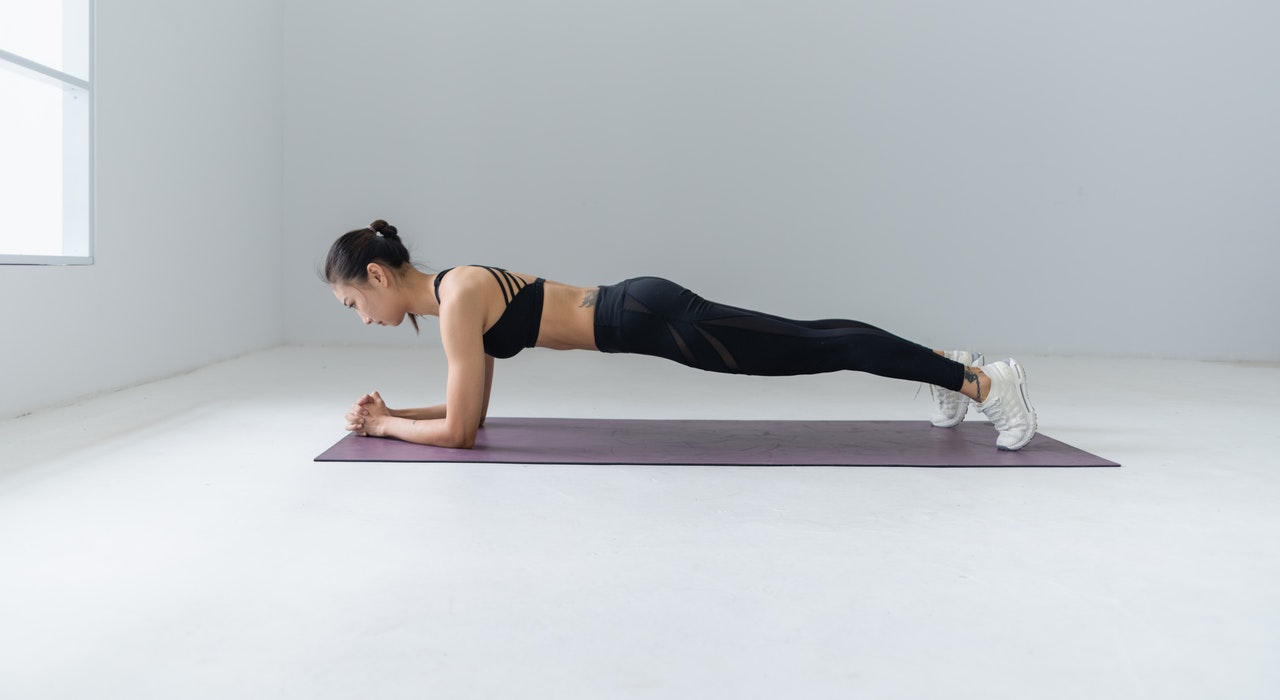Abdominal-Exercise-Forearm Plank

Abdominal Exercise - Forearm Plank
Forearm Plank strengthens and tones the core. It can be done anywhere and requires little equipment, making it a good choice for those who want to get fit fast. Start a Forearm Plank by lying on your stomach with your forearms flat against the floor and directly beneath your shoulders. Engage your core and straighten your body. Maintain good form for 30 seconds. To make this exercise harder, lift one foot at a time for 10-15 seconds before returning to the starting position. This will strengthen your abs and improve body balance. Add more Forearm Planks and gradually increase their duration for best results.
Benefits of Forearm Plank Abdominal Exercises
Forearm planks work your core and midsection, making them an effective abdominal exercise. This home workout requires no equipment. Forearm planks activate the deep transversus abdominis muscle, which stabilises the spine and pelvis. It strengthens the serratus anterior, obliques, and rectus abdominis (which runs along your ribs).
Forearm planks strengthen shoulder, chest, and neck muscles, improving posture. Posture improves circulation and energy throughout the day. This exercise also strengthens your spine's core, reducing back pain. This exercise may reduce falls because a strong core improves balance.
Forearm plank exercises, which require multiple muscles to stabilise, improve body coordination. Coordination sports like gymnastics and martial arts benefit from this exercise. Forearm planks improve focus, mental clarity, and muscular endurance, which will help you perform better in any sport or activity!
Variations of Forearm Plank
Side Plank: Shift your weight to one side and support yourself with one arm in this forearm plank variation. Keep your feet stacked and your body straight. Start with 30 seconds per side and work up to a minute as you get stronger.
Reverse Plank: This version works slightly different muscles by changing your body angle to the floor. Sit with legs straight out in front of you and hands behind your back to do this exercise. Hold for 10–30 seconds with your hips off the ground.
Hip Dip Plank: To make forearm plank harder, add a hip dip. From here, lower one hip towards the ground, lift it back up, and repeat on the other side. Start with 10 reps per side and increase based on strength.
How to Properly Execute a Forearm Plank
Keep your core engaged in the forearm plank. Maintain tight abdominals, glutes, legs, and feet. Your torso shouldn't sag or arch. Keep your elbows directly under your shoulders and your wrists inline with them to maintain proper form. After finding a good starting position, hold for 30 seconds and gradually increase the time as you get comfortable.
Maintaining this posture requires deep breaths and muscle engagement. Keep your body straight during this exercise! If needed, slightly adjust toes to better grip the surface beneath them for stability, but do not rock side-to-side or shift weight back and forth as this can strain certain body parts.
Muscles Worked During a Forearm Plank
Forearm planks strengthen the core. Abdominals, obliques, and erector spinae are worked. It also engages other important arm and shoulder muscle groups. A forearm plank works your upper arm biceps, triceps, trapezius, rhomboids, deltoids, and rotator cuff muscles. Planking on your elbows engages more arm muscles than a traditional plank with both arms straight out. It tones your abs and upper body! While planking on your forearms, a narrower stance will help you stay balanced and engage more stabilising muscle groups.
Safety Tips for Doing a Forearm Plank
Warm up before exercising. Dynamic arm circles or shoulder rolls can prepare your body for the plank. Engage your abs and glutes and align your hips and shoulders when doing a forearm plank. Keep your head neutral and avoid looking down or up.
Holding the plank too long or improperly can cause injury. Start with a 15-20-second plank and increase as needed. Avoid static positions for more than 30 seconds to avoid neck strain. Take breaks during this exercise by kneeling and returning to the starting position.
Breathe! Maintaining steady breath during planks helps regulate muscle tension and oxygenate the body. Breathe deeply and exhale as you contract your abdominal muscles towards your spine between reps.
Conclusion
Finally, the abdominal-exercise forearm plank improves posture and core strength. To tone your upper and lower abdominals, chest, and back, do this exercise regularly. Using proper form when doing this exercise will prevent injuries. Planks can tone the midsection quickly. Its low impact makes it suitable for almost everyone, regardless of fitness level.
In Short:
Steps involved:
1. Place your forearms on the floor with your elbows bent at 90 degrees aligned beneath the shoulders, with your arms parallel at shoulder-width.
2. Keep your feet together with your toes touching the ground.
3. Lift your stomach off the ground and form a straight line from your heels to the crown of the head and keep holding the position.
Do’s:
-
Keep your body in a line with your head, down to your spine, and all the way down to your toes.
-
Keep breathing all the way.
-
Keep the arms directly beneath your shoulders.
-
Engage your core by pulling your belly button back towards your back.
-
Squeeze your glutes& your quads by keeping your body tight to ensure you’re building the right muscles.
-
Use a mirror or a camera to check your form so that you can keep a check if you are going wrong somewhere.
Don’ts:
-
Don’t stick your buttocks in the air.
-
Don't let your hips sad toward the ground otherwise, you will strain your lower back.
-
Don’t arch your back.
-
Don’t drop your head.
-
Don’t spread your hands too far apart.
-
Don't scrunch your shoulders to your ears otherwise, you will be losing energy unnecessarily.
-
Don’t hold your breath because your muscles need a constant supply of oxygen.
